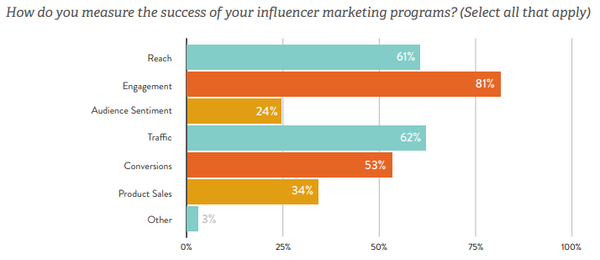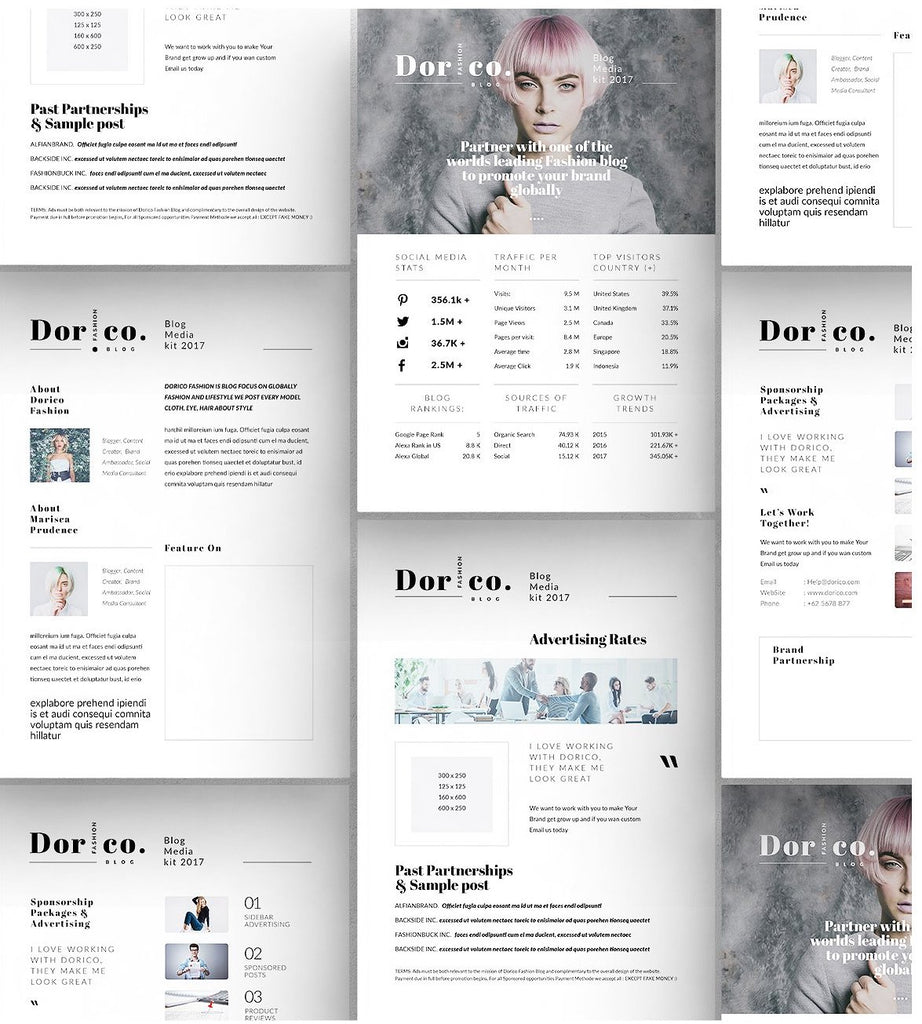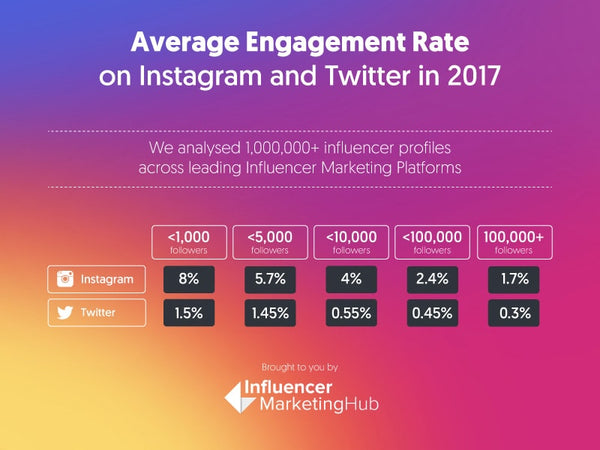Influencer marketing—the practice of partnering with well-known individuals (often social media celebrities) to promote a product or service to their followers—is a fast-growing industry.
According to recent studies, in 2017 the global value of influencer marketing was $1.07 billion and that number is expected to more than double this year. By identifying people who influence your current and potential customers, you can choose the right brand partners and create marketing strategies to appeal to both your audiences.
But finding and vetting the right influencer is a daunting challenge for newbies to influencer marketing. Partnering with the right influencer is a crucial step when building a cooperative campaign. Some factors to consider include:
- Who are they
- Their total reach
- Who their followers are
- The influencer’s type of engagement
- Their authenticity
While those are a few top-level items to weigh when reaching out to influencers, you’ll need to do some additional due diligence before signing on the dotted line with anyone. Finding the right person goes far beyond their follower count.
Here are some ways to find the best influencer for your business based on your goals and budget, and details on what to look for in an influencer’s media kit.
Set your influencer marketing goals
The first step in defining an influencer marketing strategy is identifying your objectives. What is your approach: Do you want to rent the influencer's audience, or are you looking for a long-term partnership with the influencer to co-create content that gets published on both of your platforms?
Some potential marketing goals and strategies include:
- Boost your email list: Gain email subscribers through a giveaway campaign. To enter the giveaway, followers need to sign up for your email list.
- Build product awareness: Generate sales through a product highlight on an influencer’s social channels.
- Building brand awareness: Partner with an influencer to sell a new product or build buzz prior to a launch.
- Attracting a new market: Creating shared content can help capture a segment of your target demographic that you haven't reached yet.
- Increasing your social following: Reach new followers with a campaign that prompts an influencer’s audience to follow you for the chance to win a prize.
Finding the right fit: Treat influencers like partners
As a rule of thumb, it's beneficial to partner with an influencer who has around the same number of followers as you. If you have 3,000 followers, an influencer with 150,000 followers might fall outside your budget.
But finding the best influencer for your business can depend on more than a comparable audience size.
Like all good brands, every influencer has a different story to tell.
If your stories don't align or complement each other, your campaign may not come off as authentic to your audience. For example, if you’re a meat-of-the-month subscription brand, it’s not wise to choose an influencer who is an outspoken vegan.
You also shouldn’t treat your campaign with an influencer simply as a transaction—instead, treat them like a partner. The better the relationship you cultivate with influencers, the more likely they’ll be loyal to you and your business.
Building a strong relationship with an influencer will encourage them to promote your brand with more enthusiasm and can organically create brand advocacy among their followers. If influencers only promote your products because you're paying them, there's a chance the content they share won’t feel authentic and their followers will be less likely to engage.
Know your audience and the influencer’s audience
It’s important to understand your audience and to know exactly who an influencer’s audience is in order to ensure they align with your brand.
For example, if you sell laptop bags for commuters, your target demographic could include customers who are career-focused, tech-savvy, commuters, and, of course, laptop owners.
Make sure your target audience is similar to that of your influencer's. Working with the right influencers guarantees that your products get shared with relevant audiences who are interested in what you're offering.
How to approach influencers
Platforms and influencer online marketing tools like Tapinfluence and Upfluence can make the process of approaching an influencer more manageable. However, there are also scrappy methods to track influencer marketing partnerships if you're on a smaller budget:
- Learn how to use hashtags on Instagram or YouTube to look for influencers who align with your brand
- Send them a direct message or an email (many influencers list their email address in their bio)
- Once you've made contact, ask for their media kit and partnership pricing
- If it's a good match, schedule a phone call to discuss your goals for partnering with the influencer
- Ask the influencer to provide you with stats and key performance indicators (KPIs) from previous campaigns they worked on

💡 RECOMMENDED READING: Interested in Using Instagram to Market Your Retail Business? Here's Everything You Need to Get Started
Once you’ve found and vetted the right influencer, here are a few tips to ensure things go smoothly:
- After you brainstorm together and come to an agreement, put it in writing with a contract
- Only send payment once the agreement is signed by both parties
- Send payment as per the payment terms you've agreed on
- Keep track of the influencer to make sure they execute on your plan

What is a media kit?
A media kit is essentially an influencer's résumé. It's used to share the details and statistics of their online reach and partnership capabilities, including their audience demographics.
A media kit should also include an influencer’s bio (what they do, interests, personality, and their niche); stats such as unique website visitors, social media followers per channel, engagement rate per social media channel, newsletter subscribers; audience demographics (location, gender, age, interests, behavior); collaboration opportunities; and contact information and social media handles.
Good media kits will tell you what brands the influencer has partnered with before, statistics from those partnerships (be sure to look specifically at the stats for brands similar to yours), and what the influencer stands for. It should also include testimonials from past clients. If an influencer’s media kit doesn’t contain information you want, be sure to ask.

Why engagement rate is more important than reach
If you're on a tight budget, your money might go further if you partner with two smaller influencers (known as micro-influencers) instead of a single influencer with a sizable audience (traditional macro-influencers).
FURTHER READING: Learn more about how (and why) you should engage micro-influencers for your next campaign.
Micro-influencers usually have less than 10,000 followers and tend to use influencer platforms to connect with brands and develop partnerships. They usually are less expensive to work with, more authentic and engaged with their audience, and easier to start a relationship with.
On the flip side of the coin, macro-influencers are usually well-known and have celebrity status. They don't need to use influencer platforms to find partners because brands typically approach them for product features. Macro-influencers are great for getting your brand in front of millions of people, but they aren’t always as engaged with their audience.
Working with a macro-influencer can also be extremely expensive. One piece of content from a celebrity influencer could cost anywhere from $2,000 to a $50,000, depending on their status and follower count.
Let's say you run a campaign with an influencer who has 150,000 followers and charges $1,500 per post. If the influencer has an engagement rate of 2%, you'll receive approximately 3,000 interactions per post at a cost of 50 cents per engagement:
150,000 (Followers) x .02 (Engagement Rate) = 3,000 (Approximate Interactions per Post)
$1,500 (Cost per Post) / 3,000 (Approximate Interactions per Post) = 50 cents (Cost per Engagement)
Conversely, an influencer who has 12,000 followers may charge you $600 per post but have a higher engagement rate of 12%:
12,000 (Followers) x .12 (Engagement Rate) = 1,440 (Approximate Interactions per Post)
$600 (Cost per Post) / 1,440 (Approximate Interactions per Post) = 42 cents (Cost per Engagement)
The second scenario is more cost-effective—this influencer has less overall reach, but higher engagement with their audience. You can potentially make a stronger impact on the influencer's audience and receive a better return on your investment (ROI).
How to calculate an influencer’s engagement rate
The number of followers an influencer has is not the most important number they’ll include in their media kit. It's vital to measure an influencer’s engagement rate: the percentage of the influencer's audience that responds to their content. Examples of engagement include post likes or reactions, shares, views, and comments.
Engagement rate can help you determine which influencers to work with based on how their content performs in this context.
There’s a simple formula to calculate the engagement rate as a percentage:
Total Likes + Comments Over the Last 30 Days / Total Number of Posts Over the Past 30 Days = Average Engagement Per Post
Average Engagement Per Post / Total Number of Followers = Engagement Rate (multiply by 100 to convert to a percentage)
For example, here is the engagement rate of a hypothetical influencer with 3,500 followers, who made 15 Instagram posts over the past 30 days:
1,500 Likes + 375 Comments / 15 Posts Over 30 Days = 125 (Average Engagement Per Post)
125 (Average Engagement Per Post Over 30 Days) / 3,500 (Followers) = .04 (Engagement Rate) x 100 = 4%
According to influencer marketing platform Scrunch, a healthy engagement rate on Instagram is between 1-3%, so the influencer in this example is above average.
Influencer Fee also has a free calculator you can use to find an influencers engagement rate on Instagram.
How to budget and pay influencers
How much of your marketing budget you spend on influencers is up to you, but your influencer marketing budget doesn’t have to be calculated in dollars: an influencer might be willing to accept products in exchange for a share on social media. If so, you can simply build the cost of the exchanged products into your marketing budget.
For example, if your product giveaway budget for Q1 is $200 and your cost of goods (COGS) per unit is $25, that means you can afford to give away eight units of that product during the first quarter of the year.
Your influencer marketing budget be accounted for as a subcategory in your overall marketing budget. A retailer’s marketing budget is individual to their business—for example, if your quarterly marketing budget is $5,000 you may want to allocate 10%, or $500, of that budget to influencer marketing.
Set payment terms
You'll have a better understanding of what to expect regarding ROI after you review the influencer's media kit and stats. During the negotiation process, you can ask influencers how they typically work with brands, but you can also try to set the conditions.
For example, you can offer to pay 50% to kick off the campaign and the remaining 50% once the campaign finishes. It's key to have all payment terms compiled into a written agreement that you and the influencer both sign.
Collaborate and create useful content—not traditional ads
You’ll have the best chance of engaging an audience if you create authentic, on-brand content that captures what you stand for and lets the influencer's personality shine.
Looking again at the laptop bag example, instead of simply having an influencer take a photo of themselves wearing the item and sharing it on Instagram, you could design a campaign that shows the influencer’s audience how they can use the bag to go from work to a date night. Alternatively, if the bag can be worn three different ways, you could work with the influencer to showcase these features.
Keep in mind, the U.S. Federal Trade Commission requires brands and influencers to announce partnerships when posting content. So, instead of using generic hashtags like #ad or #sponsored in a post, create a personalized hashtag that combines your brand name and one word (or a few) that relate the campaign you are launching with influencers.
For example, if you look at a recent Instagram campaign by Panera created a hashtag—#PaneraDelivers—that all of its partners use to spread the word about its new delivery service.
Influencer marketing: Finding the best ambassador for your business
Now that you have a better understanding of influencer marketing and what to look for in your next brand partner, you can start your research to find an authentic influencer that can capture your niche audience, build brand awareness, and deliver a good return on your investment.
Read more
- The 8 Best Podcasts for On-the-Go Retail Entrepreneurs
- What Is A Merchandise Marketing Calendar (And Why You Need One)
- Retail Events: The Complete Guide (+ Real-world Examples)
- Back-to-School Marketing: A Quickstart Guide for Businesses in the Industry
- What is Visual Search: How Retailers Can Use it to Enhance the Customer Experience
- Cause Marketing: What It Is, How To Do It, and Why It Matters
- 5 Lessons Traditional Retailers Can Learn From DTC Brands
- Creative Facebook Tactics: 13 Expert Tips to Amp Up Your Retail Social Strategy
- Affiliate Programs for Retailers: What Are They and How They Can Boost Your Revenue
Influencer marketing for retail FAQ
What is a retail influencer?
Which industry uses influencer marketing the most?
What are the 4 types of influencers?
- Micro-Influencers: These influencers have a small but highly engaged audience and are typically seen as more authentic and relatable.
- Macro-Influencers: Macro-influencers have a larger following and typically have more influence over their audience.
- Celebrity Influencers: These influencers are typically well-known personalities who have a large and loyal fan base.
- Nano-Influencers: These influencers have a very small following, often around 1,000 followers or less. They are typically more niche and specialize in a certain topic.





